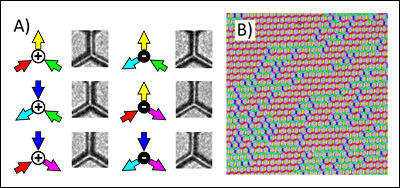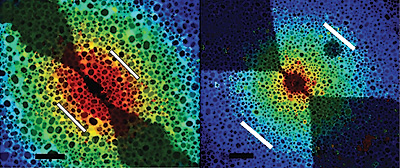News Story
MSE Faculty Continues to Produce "Research Leaders"
Materials Science and Engineering (MSE) professors Robert M. Briber, John Cumings, Ray Phaneuf, Gary Rubloff, and Lourdes Salamanca-Riba were among the university faculty members recently recognized for their efforts in bringing sponsored research dollars to campus. This is the second year in a row that MSE has produced five Research Leaders—one-third of its full-time faculty.
Briber (MSE Chair) was recognized for his project with the National Institute of Standards and Technology Center for Neutron Research on using cold neutron scattering spectroscopy to characterize a range of advanced materials. These materials encompass functional materials, hydrogen storage materials, fuel cell membranes, nanoparticles, and soft materials, as well as many others.
Cumings receives funding from Agilent Corporation, the National Science Foundation, and the University of Maryland's Materials Research Science and Engineering Center (MRSEC). His research focuses on using electron microscopy to uncover the behavior of nanomaterials and nanodevices. The electron microscopes recently acquired by the NISPLab make his work possible. In particular, the new JEOL-2100 microscope has the capability to image magnetic fields in nanostructures in real-time while dynamic processes, such as passing electrical current though the structures, occur.
Phaneuf received a grant from the National Science Foundation this year to extend his studies of patterning in probing unstable growth on GaAs surfaces down to the nanometer scale using electron beam lithography. This will be complimented by kinetic Monte Carlo simulations to determine the atom-scale mechanism leading to the transient instabilities he and his group have identified. Phaneuf has continuing support through the NSF on a NIRT project with MSE Professor Gottlieb Oehrlein, Professor David Graves at UC-Berkeley, and Professor Grant Willson at UT-Austin on resist-plasma interactions; and the UM-MRSEC on quasi-1D organic electronic interfaces. He is supported by the Laboratory for Physical Sciences to carry out work using metal nanoparticles to enhance interactions with light, including fluorescence, energy harvesting, and metamaterials.
Rubloff (MSE, ISR and Director, Maryland NanoCenter) is one of a group of Clark School faculty members that continues to receive funding from the Robert W. Deutsch Foundation to develop a nanoscale, microfluidic biochip that can serve as a tiny drug discovery laboratory. He and a cross-disciplinary team of colleagues were also recently awarded the National Science Foundation's newest and most competitive grant for Emerging Frontiers in Research and Innovation in Cellular and Biomolecular Engineering (EFRI-CBE) (see related story). Rubloff has also been responsible for a number of large awards in his role as NanoCenter Director, including multi-investigator Federal grants and the State's Sunny Day funding.
Salamanca-Riba is a member of the NSF-funded Materials Research Science and Engineering Center (MRSEC). Her research at the center focuses on the characterization of ferroelectric and ferromagnetic materials, including nanocomposites. She was also the PI of the Materials Research Instrumentation proposal for the acquisition of analytical instrumentation for the electron microscopes in the NISPLab (see related story). She uses the microscopes extensively for research and teaching.
Published October 29, 2007





